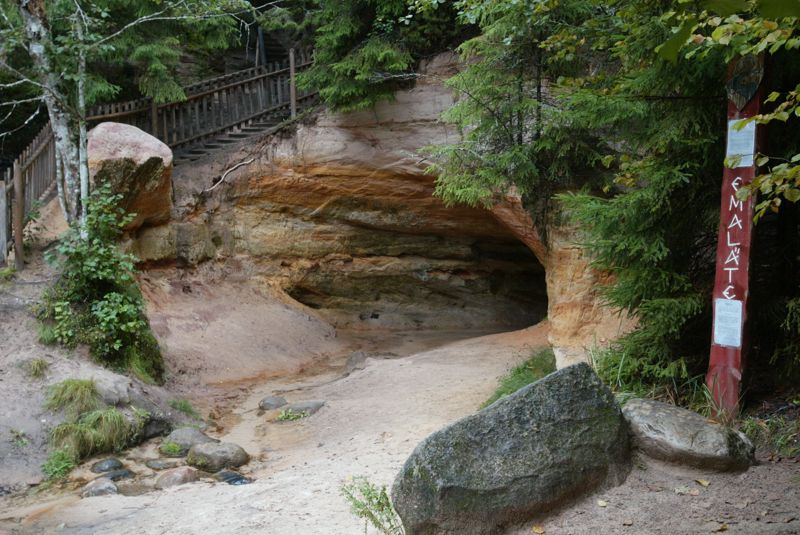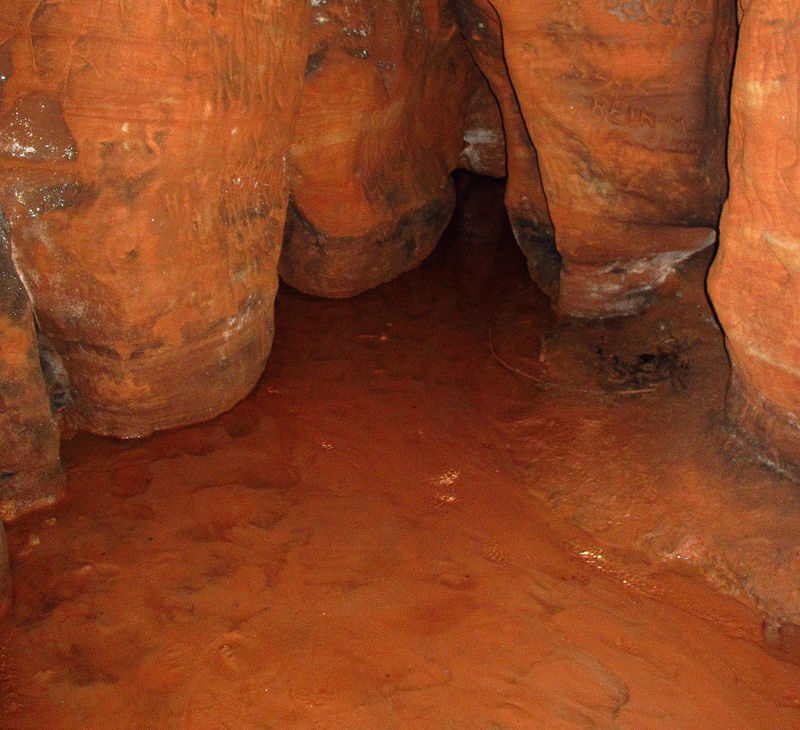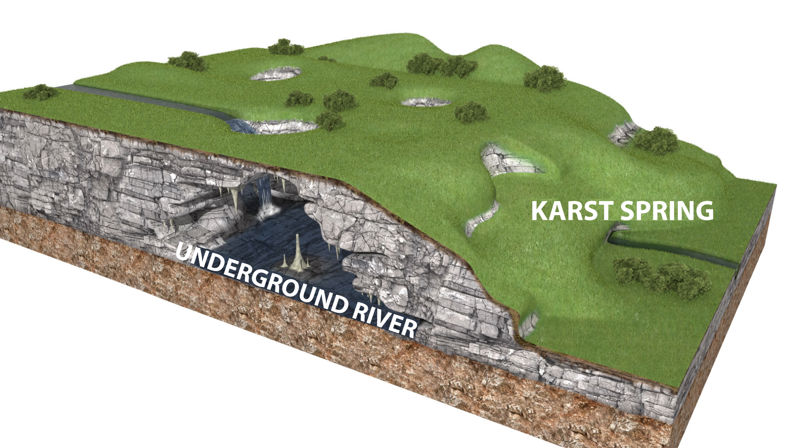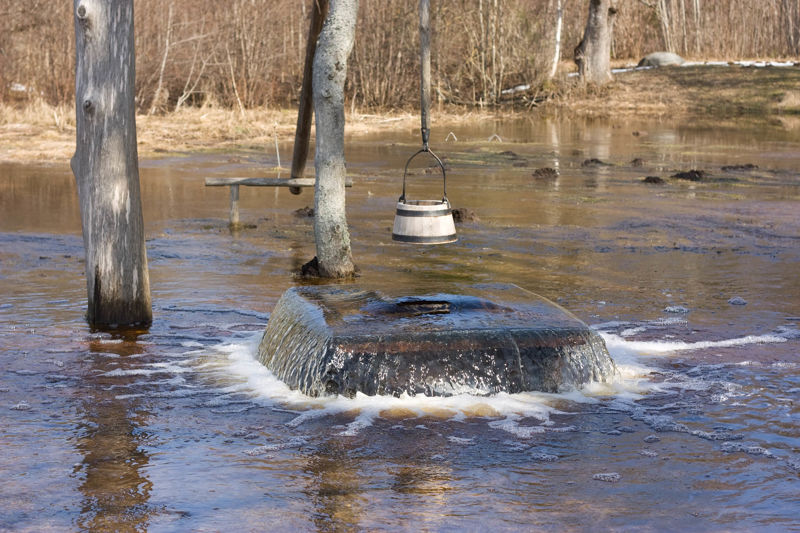- Where does rainwater and snowmelt go?
- How do rocks affect the depth and movement of groundwater?
- What is a spring?
What is groundwater?
Each year, about 505,000 cubic kilometres of water fall on Earth as precipitation. This makes a global annual average of around 990 millimetres or almost a meter of precipitation. After the snow melts and after every rain, the ground dries again, and the puddles disappear.
Groundwater is the water accumulated underground in the cracks and spaces of soil and rocks over a long time. It is usually fresh, and there is much more water than in all the lakes and rivers combined.
Water infiltrates the ground quickly when the gaps between the particles are as large as in sand or gravel. However, clay particles are tiny and tightly packed together. Water cannot penetrate the clay layer, so it is waterproof. Groundwater moves along and between the waterproof layers.
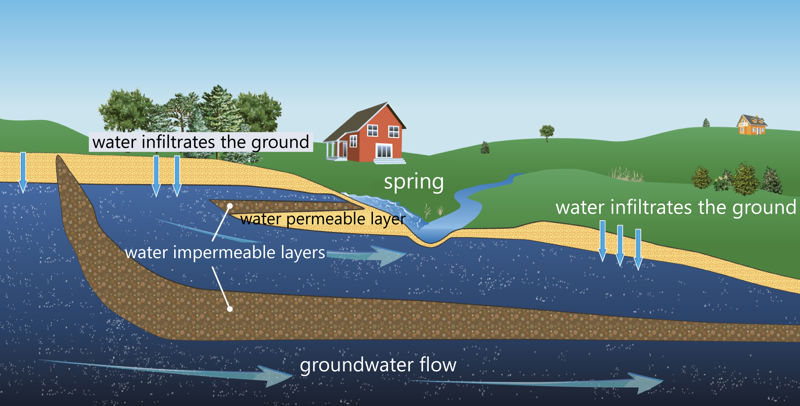
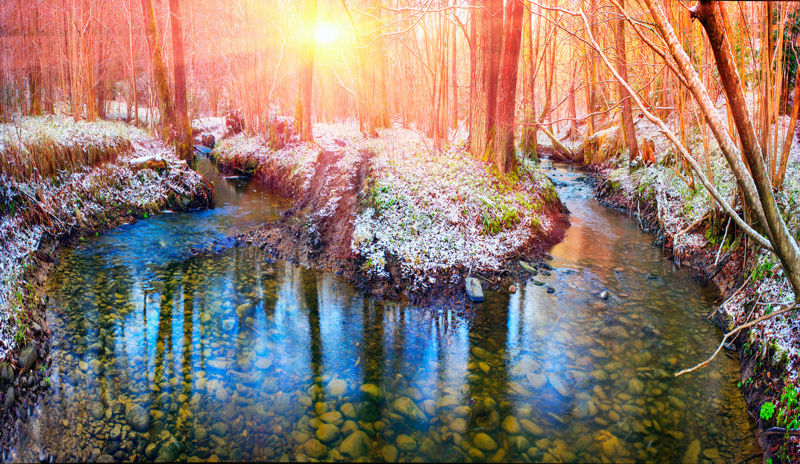
- Sand
- Clay
- Gravel
The groundwater level is not always at the same depth. In some places, it may be quite close to the surface, but there are places where you have to drill very deep before you reach groundwater. Heavy rain and snowmelt raises groundwater levels, and a long drought lowers it.
The water that reaches the waterproof layer is looking for a way forward, and usually finds it by emerging from the ground as a spring. The water in springs that forms at the foot of highlands usually passes through several rock layers, and is cold and clear as a result. A stream can emerge from spring water, which can eventually grow into a river when combined with others of its kind.
Karstification
When certain types of rocks come in contact with water, they are slowly dissolved and washed away. The phenomenon where rainwater seeps into the ground and dissolves rocks is called karstification. As a result, caves and hollows form in the rocks, which turn into underground rivers and lakes. During spring, snowmelt and prolonged rainfall fill the underground cavities with water, and the excess water rises to the ground as karst springs.

Karstification is theof rocks that is caused by the moving. As a result of karstification,are formed underground.
Mineral water
Fresh and clean groundwater is essential for plants, animals and humans. However, some groundwater has moved along deep aquifers for thousands of years. As the water dissolves the rocks, various substances enter the groundwater over time, and the water gradually becomes more saline. Such water is called mineral water or medicinal water, and it is good for a person's health because it contains some necessary minerals. Mineral water is found in many places all around the world. Germany is one of the regions with the most mineral water sources in the world.
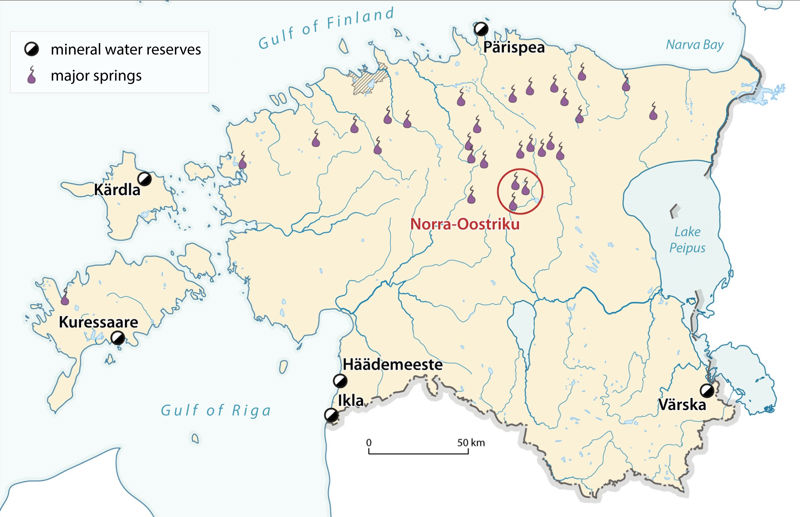
- There are few springs in karst areas.
- There are many springs in karst areas.
- There is no connection between the abundance of springs and the distribution of karst areas.
Water circulates on Earth
In previous lessons, you have learned that water evaporates from the surface of bodies of water and rises as water vapour. When the rising air cools, the water vapour condenses and turns into tiny droplets that form clouds. In the clouds, the droplets grow larger, become heavier, and fall back to the ground as precipitation. There, some rainwater flows into rivers and the sea, some infiltrates the soil and eventually reaches groundwater, which reaches lakes and seas also. The continuous circulation of water in nature is called the water cycle.
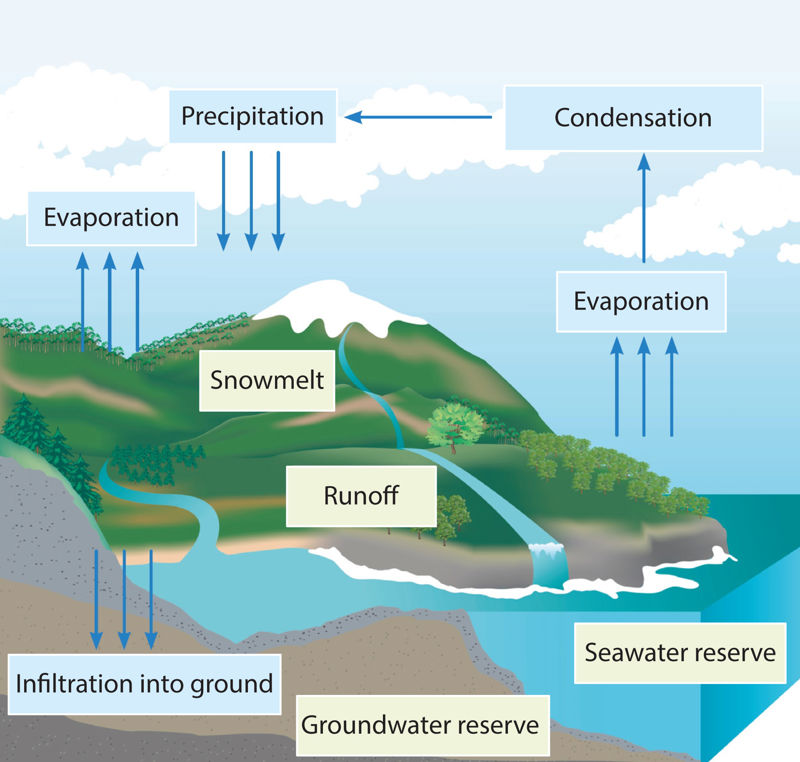
Not all rainwater reaches rivers and groundwater. Some of it evaporates before it reaches the ground, or sometimes plants extract the water from the soil with their roots, which returns to the air as water vapour through the leaves.
The water cycle is important for both the living and nonliving parts of nature. Precipitation supplies plants and animals with water. Without precipitation, wells, rivers and lakes, swamps and bogs would dry. Both water and soil are purified in the water cycle.
Think!
- The water moving in the rock layers sinks deeper and deeper due to gravity, until it reaches a waterproof layer. However, water in the soil can move both downwards and upwards. Which property of water makes this possible?
- Describe the path that water takes on its way from the sea to groundwater.
Cloud formation –
Melting of glacial ice –
Rainwater flowing into the sea –
Water infiltration into the ground –
Important terms
- groundwater – the water that has accumulated underground in the cracks and spaces in soil and rocks
- spring – a place where groundwater emerges to the Earth's surface
- karstification –the phenomenon where rainwater infiltrates the ground and dissolves the rocks there, leaving hollows and caves
- water cycle – the continuous circulation of water
I now know that…
Groundwater has accumulated in the ground over a long time. Water moves down through the soil and rock layers due to gravity, until it reaches a waterproof layer. Groundwater emerges to the surface as springs. There are many springs in karst areas.
